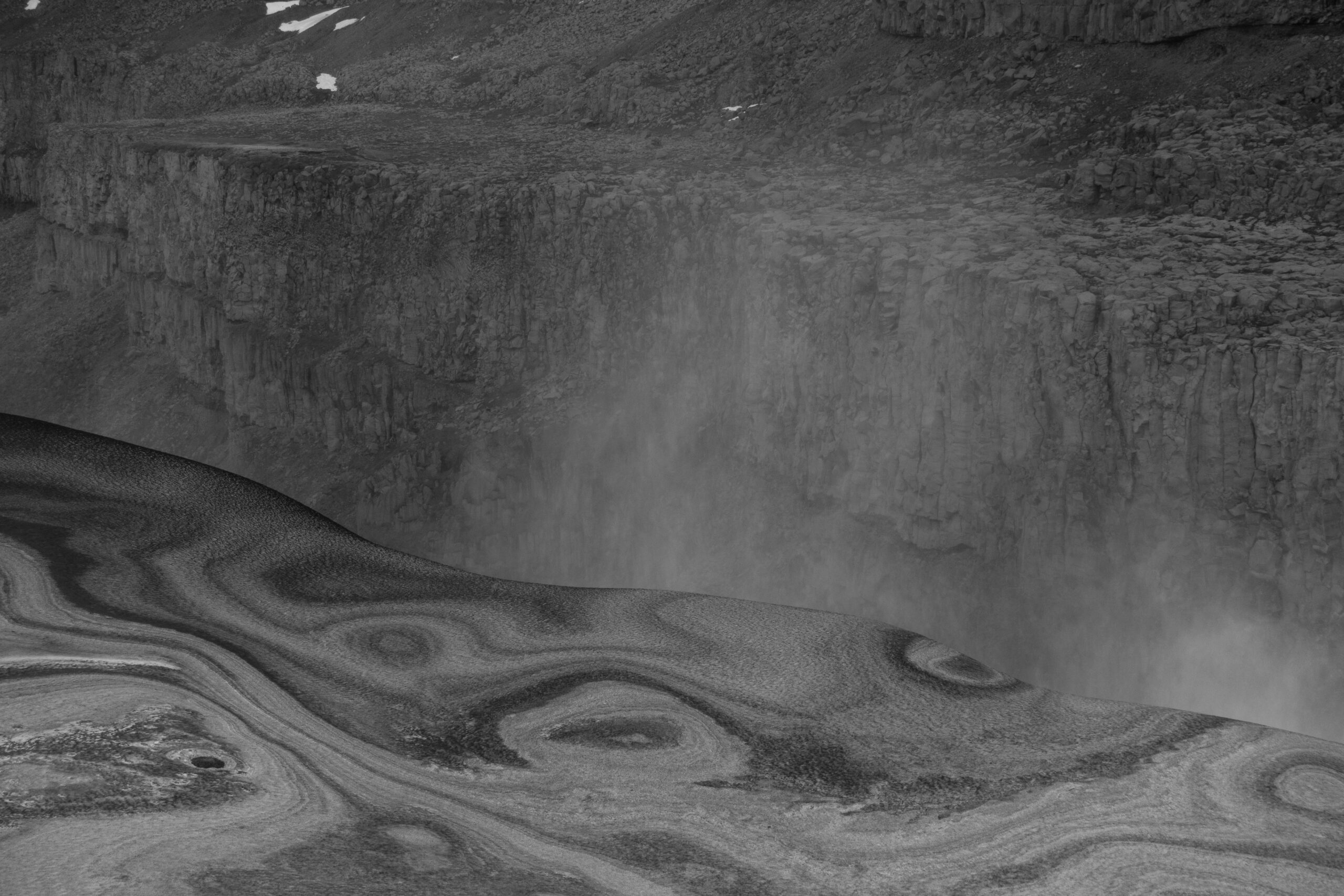
FR/ENG
Musée des Beaux-Arts, Mulhouse
13 septembre 2024 - 5 janvier 2025
tous les jours (sauf le mardi et les jours fériés): 13h - 18h30
pendant le marché de Noël : 13h - 19h
Vernissage le 13 septembre à 18h30
Commissaire/curator : Anne Immelé
Dans le cadre de la 6e édition de la BPM, l’exposition those eyes - these eyes - they fade explore les liens souterrains unissant l'humain aux mondes vivants, et ce, depuis la nuit des temps. Offrant un parcours entre des espaces urbains et naturels, elle se veut être une méditation prolongée, une contemplation active et poétique. Les œuvres, parfois intimes parfois plus objectives, reflètent la vision personnelle des photographes et invitent à une expérience visuelle et émotionnelle plutôt qu'à une compréhension littérale.
Les installations photographiques encouragent le public à naviguer à travers des environnements aux contrastes marqués, suscitant une diversité de perceptions. Comme des images qui apparaissent à chaque clignement d'œil, l'exposition propose des visions d’un monde en mouvement, mettant en évidence l’interconnexion entre les humains et les autres êtres vivants, y compris les plantes. Pour Emanuele Coccia, les plantes ont modifié la structure métaphysique du monde. Selon lui, c'est aux plantes qu’il faut demander ce qu’est le monde car ce sont elles qui « font monde ». Cette connexion de la vie humaine avec celle des plantes, des minéraux, des différents organismes est primordiale dans la conception de mondes - devenus impossibles aujourd’hui - mais possibles demain.
Une première forme de those eyes - these eyes - they fade a été présentée en 2022 à l’espace Valletta Contemporary à Malte.
Avec le soutien de Neuflize OBC.
Rendez-vous autour de l'exposition :
- Vendredi 11 octobre, 18h30 : Visite de l'exposition avec Nicolas Bézard, auteur et rédacteur culturel. Gratuit, sur réservation. Nocturne au musée jusqu’à 20h.
- Mercredi 23 octobre, 14h à 17h : MUSÉOVACANCES - Atelier photographie (de 7 à 11 ans)
Intervenant : Le Réverbère, Mulhouse
En marge des expositions de la BPM, les enfants s’initieront à la technique de la surimpression. Ils apprendront à travailler avec la lumière et les ombres pour dévoiler les images sous-jacentes où les densités se transforment en fonction des éléments superposés. Leurs créations seront des oeuvres uniques et poétiques. Par la superposition d’images, ils créeront des connexions entre l’humain et le vivant, la nature et l’espace urbain.
- Dimanche 17 novembre, 15h : Visite de l'exposition avec Nicolas Bézard, auteur et rédacteur culturel. Gratuit, sur réservation.
- Samedi 7 décembre, 18h30 : Rencontre avec Bernard Plossu, photographe de l’exposition. Rencontre animée par Nicolas Bézard. Nocturne au musée jusqu’à 20h.
As part of the 6th edition of the MBP, the exhibition those eyes - these eyes - they fade explores the underlying links between humans and the living world, since the dawn of time. Offering a journey between urban and natural spaces, it is intended as a prolonged meditation, an active and poetic contemplation. The works, sometimes intimate, sometimes more objective, reflect the personal vision of the photographers and invite visual and emotional experience rather than literal understanding.
The photographic installations encourage the public to navigate through sharply contrasting environments, eliciting a diversity of perceptions. Like images that appear with every blink of an eye, the exhibition offers visions of a world in motion, highlighting the interconnectedness between humans and other living beings, including plants. For Emanuele Coccia, plants have changed the metaphysical structure of the world. In his view, plants should be asked what the world is, because plants " shape the world ". This connection between human life and that of plants, minerals and other organisms is crucial to the conception of worlds that are impossible today, but possible tomorrow.
A first form of those eyes - these eyes - they fade was presented in 2022 at the Valletta Contemporary space in Malta.
With the support of Neuflize OBC.
Avec Ondes, Bénédicte Blondeau documente les flux d'énergie qui façonnent nos existences tout en débordant nos capacités de perception. La photographe s’est mise en quête des traces de ces ondes énergétiques et des altérations qu’elles ont laissées dans le paysage: anciens glaciers, grottes ou terres volcaniques et les a ensuite associées à des enregistrements visuels réalisés à partir d’ultrasons, à savoir des échogrammes. La genèse de ces éléments étant intimement liée à la destruction de ce qui existait autrefois, cette série traite du lien entre notre origine et notre destination ultime. Ce même lien qui nous unit à des époques lointaines, aux premières formes de vie et au cosmos, dans une vision d’interconnexion et d’interdépendance. Ondes présente une vision du réel qui n’oublie pas que celui-ci renvoie aussi à ce qu’on ne voit pas. C’est une exploration des éléments basée sur le principe que tout est en perpétuelle transformation, que nous soyons capables de le percevoir ou non.
Née à La Louvière, en Belgique, Bénédicte Blondeau a étudié la photographie à Gand et à Lisbonne, obtenant un master en communication appliquée à l'IHECS, à Bruxelles. Elle a participé à diverses expositions et conférences à travers l'Europe et son travail a été publié dans de nombreux magazines à l'international. En 2019, son premier livre photo Ce qu'il reste est paru chez l'éditeur portugais XYZ Books. En 2021, sa première exposition monographique a eu lieu au Photoforum Pasquart en Suisse. Bénédicte Blondeau a également travaillé comme réalisatrice de films documentaires et est actuellement commissaire d'expositions photographiques pour PEP - photographic exploration project qu'elle a fondé à Berlin en 2019.
With Ondes (Waves), Bénédicte Blondeau documents the flows of energy that shape our lives and overwhelm our powers of perception. The series addresses the link between our origin and our ultimate destination. The same link that unites us to distant times, to the first forms of life and to the cosmos, in a sense of interconnection and interdependence. Ondes presents a vision of reality that does not forget that it also refers to what we cannot see. It's an exploration of the elements based on the principle that everything is in perpetual transformation, whether we are capable of perceiving it or not.
Born in La Louvière, Belgium, Bénédicte Blondeau studied photography in Ghent and Lisbon, obtaining a master's degree in applied communication at the IHECS in Brussels. She has taken part in various exhibitions and conferences across Europe, and her work has been published in numerous magazines internationally. In 2019, her first photo book Ce qu'il reste was published by Portuguese publisher XYZ Books. In 2021, her first solo exhibition took place at Photoforum Pasquart in Switzerland. Bénédicte Blondeau has also worked as a documentary filmmaker and is currently curating photographic exhibitions for PEP - photographic exploration project, which she founded in Berlin in 2019.
www.instagram.com/benedicte_blondeau/
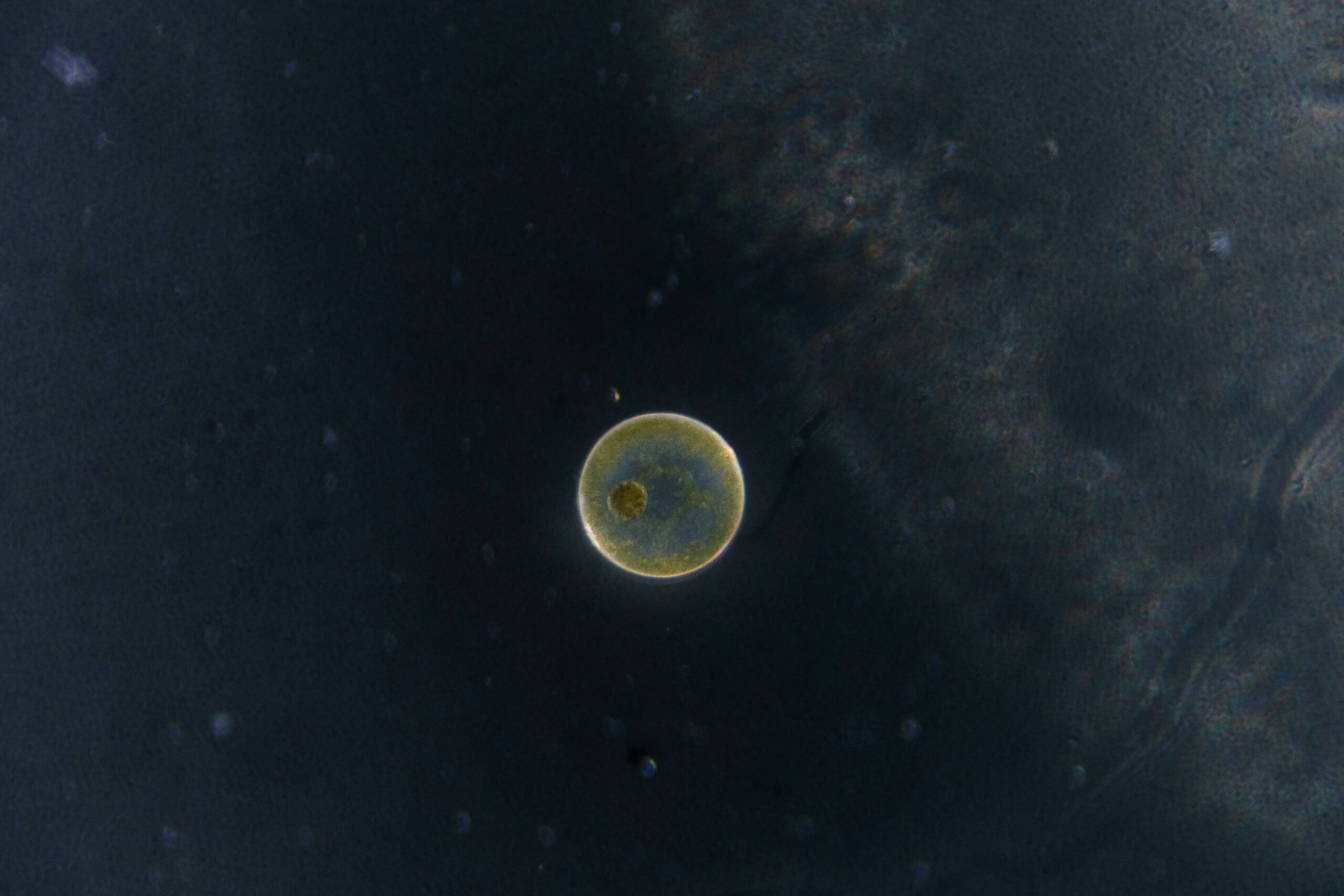
Bénédicte Blondeau, série Ondes, 2023.
La nature prisonnière de Bernard Plossu rassemble des clichés des années 1970, pris en France et aux États-Unis, illustrant la mise en scène artificielle de la nature dans des espaces pleinement bétonnés. Des arbres solitaires, ou presque, fournissent des effusions d’une vie végétale qui tente d'échapper au contrôle de l’humain dans des environnements conçus par et pour lui. Face à ces images en noir et blanc, Bernard Plossu propose d’y opposer la chaleur de l’exubérante végétation du bassin méditerranéen. Après une vie de voyage, c’est au contact de cette nature côtière et généreuse que le photographe vit désormais, sans oublier de lui rendre hommage par l’image.
Né en 1945 au Vietnam, Bernard Plossu réalise ses premières photos à treize ans, lors d'un voyage au Sahara avec son père. En 1965, il part au Mexique où il photographie ses amis beatniks avec lesquels il expérimente l'errance et la liberté. Il voyage chez les Indiens mayas, en Californie, en Égypte, en Inde, au Niger. En 1977, Bernard Plossu s'installe au Nouveau-Mexique. Il y perfectionne un style visuel direct caractérisé par une absence totale d'effet. Dans les années 1980, Il revient vivre en Europe et continue de marcher notamment en Espagne, en France, en Turquie ou sur les petites îles italiennes. Ses images sensuelles et silencieuses évoquent la douceur des corps, de la matière, du mouvement. Il est l'auteur de très nombreux ouvrages ayant fait date, tels que Le Voyage mexicain, The African Desert, Au Nord, Avant l'âge de raison ou L'heure immobile.
Bernard Plossu's La nature prisonnière (Nature as a prisoner) brings together photographs from the 1970s, taken in France and the United States, illustrating the artificial staging of nature in fully concreted spaces. Solitary, or almost, trees provide outpourings of plant life attempting to escape human control in environments designed by and for them. Faced with these black-and-white images, Bernard Plossu contrasts them with the warmth of the exuberant vegetation of the Mediterranean area. After a life of travel, the photographer now lives in contact with this generous coastal nature, without forgetting to pay tribute to it through his images.
Born in Vietnam in 1945, Bernard Plossu took his first photos at the age of thirteen, during a trip to the Sahara with his father. In 1965, he left for Mexico, where he photographed his beatnik friends, with whom he experimented with wandering and freedom. He traveled to the Mayan Indians, California, Egypt, India and Niger. In 1977, Bernard Plossu moved to New Mexico. There, he perfected a direct visual style characterized by a total absence of effect. In the 1980s, he returned to Europe and continued to walk, notably in Spain, France, Turkey and the small islands of Italy. His sensual, silent images evoke the softness of bodies, matter and movement. He is the author of many landmark books, including Le Voyage mexicain, The African Desert, Au Nord, Avant l'âge de raison and L'heure immobile.
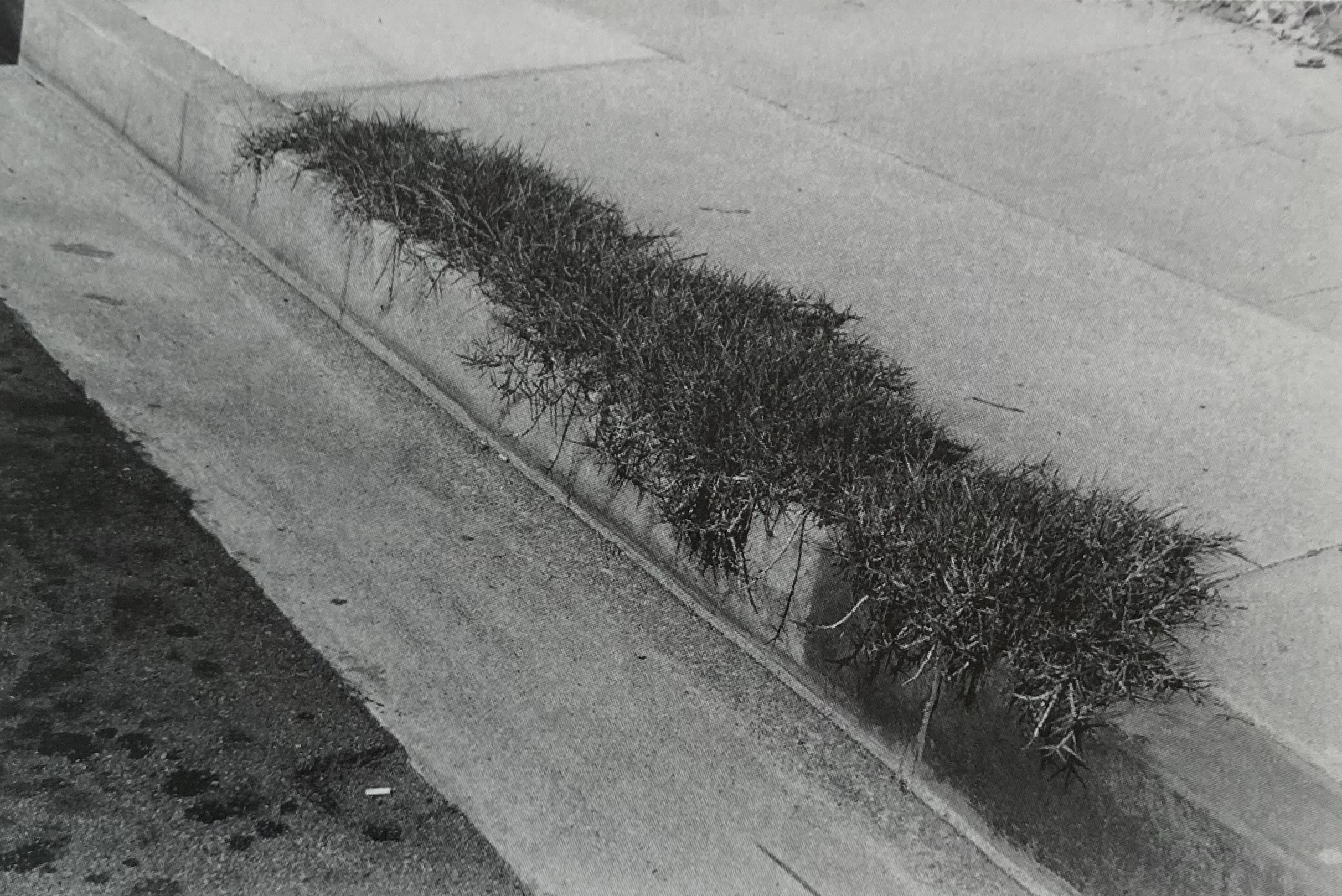
Bernard Plossu, La nature prisonnière, 1974.
Dans Pinetu, Nigel Baldacchino capture les arbres du Jubilee Grove, un espace vert urbain à Malte. Chargé d'histoire pour les habitant·es, ce bosquet charrie avec lui plusieurs strates d'une honte aux accents catholiques. Il s'y déroule une culture de drague masculine active mais secrète alors que le lieu, témoin d'épisodes de violence, sert également de refuge aux sans-abris et de zone de consommation d’héroïne. Les formes uniques des arbres deviennent des métaphores des divers parcours de vie, bifurquants et entrelacés, tandis que l'espace porte également la mémoire personnelle de l'artiste qui a grandi non loin de celui-ci. Ne représentant que la végétation du parc et non sa population y vivant souvent une double vie, Nigel Baldacchino choisit d’éluder toute représentation explicite et sensationnaliste au profit du trouble de la suggestion.
Né en 1989, Nigel Baldacchino est un artiste et un architecte basé à Malte. Sa pratique artistique s'étend à divers médias, dont la photographie, la production musicale, la vidéo, le texte et la conception d'objets et d'espaces physiques. Son élan vers la photographie dépasse le cadre de thèmes donnés et est souvent alimenté par ses propres réflexions sporadiques sur la façon dont les gens se rapportent au monde qui les entoure, par leur présence dans l'espace et la perception qu'ils en ont.
In Pinetu, Nigel Baldacchino captures the trees of Jubilee Grove, an urban green space in Malta. It is a very storied spot for locals, carrying layers of Catholic shame fuelled by its connotations to an active but covert male cruising culture, refuge for the homeless, heavy consumption of heroin & episodes of mugging and violence. The unique shapes of the trees become metaphors for various peculiar, bifurcating & intertwining life paths, while the space also bears the personal memory of the artist, who grew up not far from it. Representing only the vegetation of the park and not its people, often leading half of their double lives there, Nigel Baldacchino chooses to avoid any explicit, sensationalist representation in favor of the disturbance of suggestion.
Born in 1989, Nigel Baldacchino is an artist and architect based in Malta. His artistic practice spans a variety of media, including photography, music production, video, text and the design of physical objects and spaces. His impulse towards photography goes beyond given themes and is often fueled by his own sporadic reflections on how people relate to the world around them, through their presence in space and their perception of it.
www.instagram.com/nigelbaldacchino/
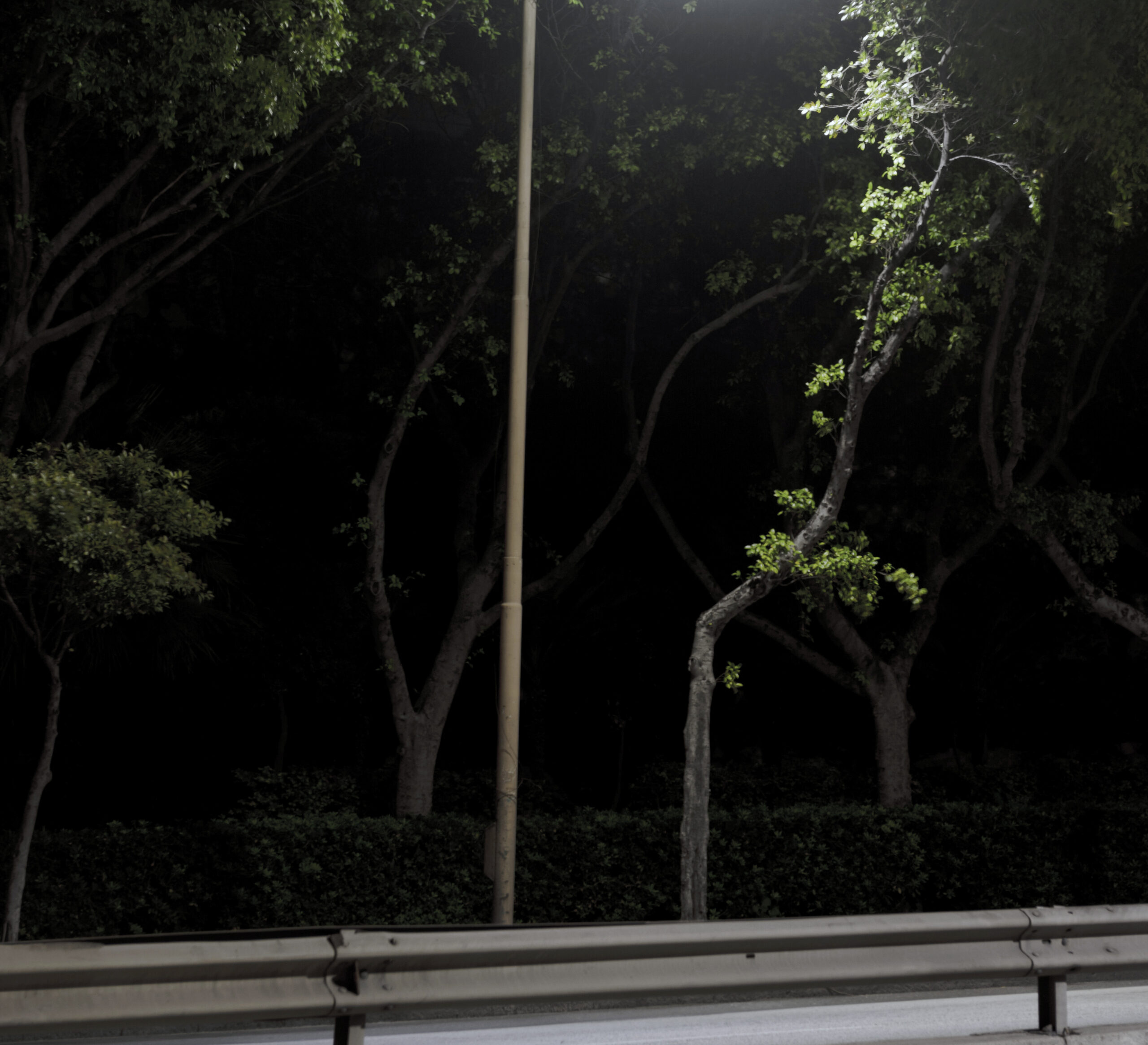
Nigel Baldacchino, Pinetu.
Erasure, After Nature, présente des photographies réalisées au début de l’année 2024 à un même endroit dans le désert du Colorado, en Californie du Sud. Les oeuvres dépeignent les ruines apparentes du capitalisme. Tout ce qui reste de la présence humaine sont des objets jetés et des vestiges, comme les résidus d’un passé glorieux qui est maintenant incompréhensible ou insupportable. Ce sentiment d’effacement d’une activité passée est renforcé par l’inclusion de documents à peine déchiffrables, aux côtés des images. Dans la continuité de son travail précédent (The Inhabitants, 2022), le photographe a cherché à identifier des motifs et des textures qui témoignent de la vie itinérante dans des espaces marginalisés. En s’immergeant totalement dans ces territoires, son observation méticuleuse devient une étude de la migration humaine.
Connu pour ses livres et ses images qui s’attachent aux questions de mémoire et de lieu, Raymond Meeks explore la manière dont le paysage peut façonner l’individu et, de manière plus abstraite, la façon dont un lieu, même absent, peut continuer à exercer un pouvoir de fascination sur l’être humain. Son travail fait partie des collections permanentes de la National Gallery of Art à Washington D.C., de la George Eastman House à Rochester et de la Bibliothèque nationale de France. Ses expositions personnelles ont eu lieu chez Casemore Kirkeby à San Francisco et chez Fotografia Europea en Italie. En 2018, son livre Halfstory Halflife (Chose Commune) a été sélectionné parmi les finalistes du prix Paris Photo / Aperture.
Erasure, After Nature, presents photographs made at a single location in Southern California’s Colorado Desert in early 2024. The works are set amongst the perceived ruins of capitalism. All that remains of human presence are discarded objects and remnants, like the residue of a glorious past that is now incomprehensible or unbearable. This sense of obliteration of a past activity is reinforced by the inclusion of barely decipherable documents alongside the images. In keeping with the approach that characterized his previous work (The Inhabitants, 2022) the photographer has sought to identify patterns and textures that bear witness to itinerant life in marginalized spaces. Through total immersion in these territories, his meticulous observation becomes a study of human migration.
Known for his books and images that address questions of memory and place, Raymond Meeks explores how landscape can shape the individual and, more abstractly, how a place, even if absent, can continue to exert a power of fascination over human beings. His work is included in the permanent collections of the National Gallery of Art in Washington D.C., the George Eastman House in Rochester and the Bibliothèque nationale de France. Solo exhibitions have been held at Casemore Kirkeby in San Francisco and Fotografia Europea in Italy. In 2018, his book Halfstory Halflife (Chose Commune) was selected as one of the finalists for the Paris Photo / Aperture prize.
www.instagram.com/raymondmeeks/
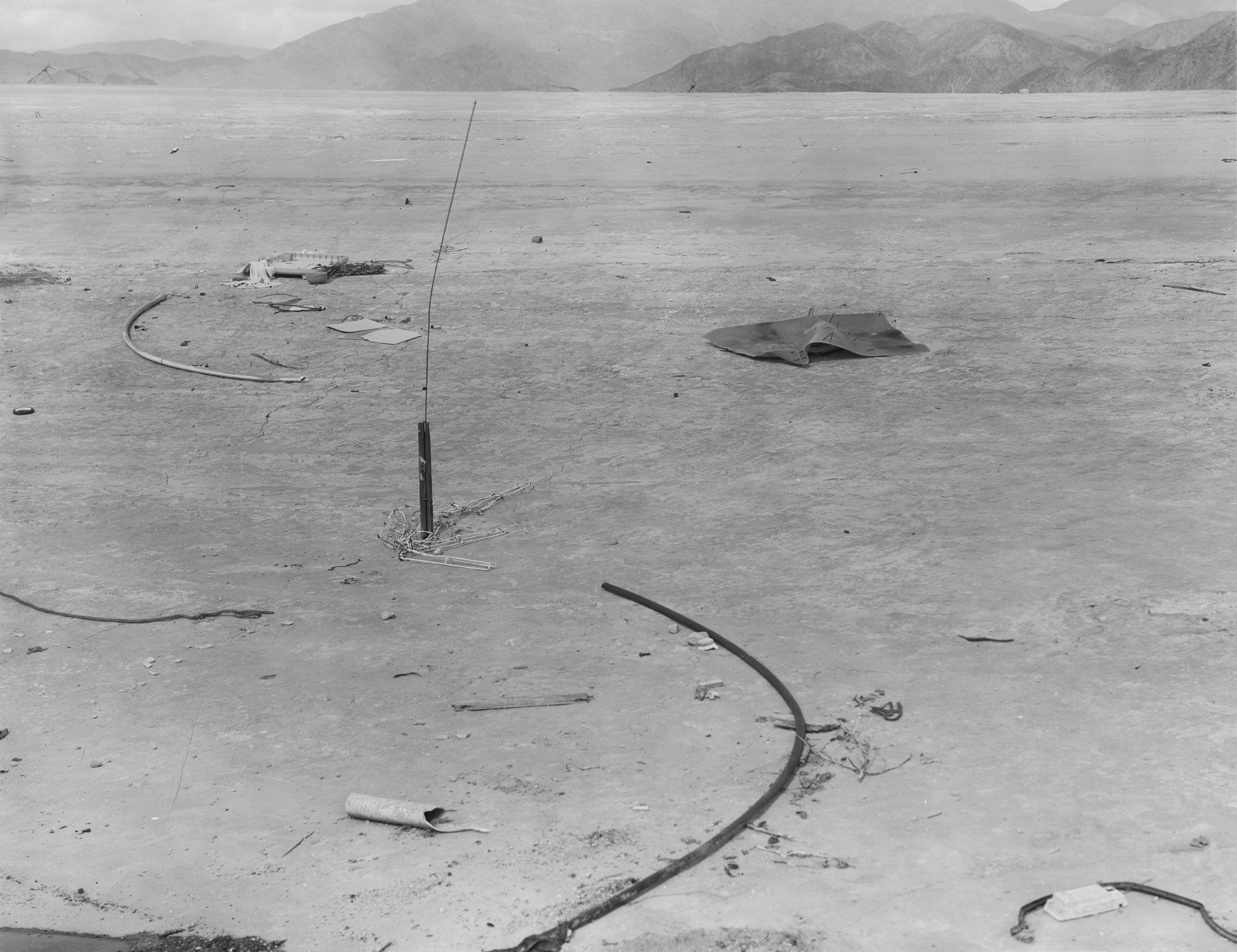
Raymond Meeks, Erasure, after nature, 2024.
Awoiska van der Molen présente une sélection de photographies réalisées tour à tour dans des espaces naturels et urbains. Mises en regard, elles se rejoignent dans l’impression de silence qui s’en dégage. Les scènes nocturnes contemplatives de la ville nous emmènent dans des lieux comme pris au dépourvu par la photographe. Dans sa pratique, cette dernière est à leur image, à la fois solitaire, discrète et consciente de sa vulnérabilité. L’espace urbain indéterminé s’y trouve comme figé dans un moment suspendu où seules les lumières artificielles rappellent une présence humaine latente. Les photographies de paysages naturels forment quant à elles une plongée dans un univers isolé, préservé et luxuriant. La profondeur de leurs ombres peut par moments rendre insaisissable toute notion de distance. Plusieurs idées de la densité entrent ainsi en résonance.
Née en 1972, Awoiska van der Molen est une artiste photographe néerlandaise. Elle a étudié l'architecture et le design, puis la photographie à la Minerva Art Academy Groningen et à la Hunter City University de New York. En 2003, elle obtient une maîtrise en photographie à l'Académie St. Joost de Breda, aux Pays-Bas. Awoiska van der Molen est connue pour ses images analogiques monumentales en noir et blanc qui représentent son expérience de l'espace primordial et psychologique dans le monde qu'elle photographie.
Quatre oeuvres d’Awoiska van der Molen ont été prêtées par la Fondation d’Entreprise Neuflize OBC.
Awoiska van der Molen presents a selection of photographs taken in both natural and urban settings. Placed together, they are united by the impression of silence that emerges. The contemplative nocturnal scenes of the city link us to a place caught unaware by the photographer, who herself is only able to stumble onto such places because she too is unprotected, solitary and silent as 'her' places themselves.The indeterminate urban space is frozen in a suspended moment, with only artificial lights to remind us of a latent human presence. The nature photographs, on the other hand, plunge us into an isolated, preserved and luxuriant universe. At times, the depth of their shadows seem to breathe an untraceable distance.Several ideas of density thus resonate.
Born in 1972, Awoiska van der Molen is a Dutch photograph and artist. She studied architecture and design, then photography at Minerva Art Academy Groningen and Hunter City University in New York. In 2003, she obtained a Master's degree in photography from the St. Joost Academy in Breda, the Netherlands. Awoiska van der Molen is known for her monumental black-and-white analog images, which represent her experience of the primordial, psychological space in the world she photographs.
Four works by Awoiska van der Molen are on loan from the Neuflize OBC Corporate Collection.
www.instagram.com/awoiska_vandermolen/
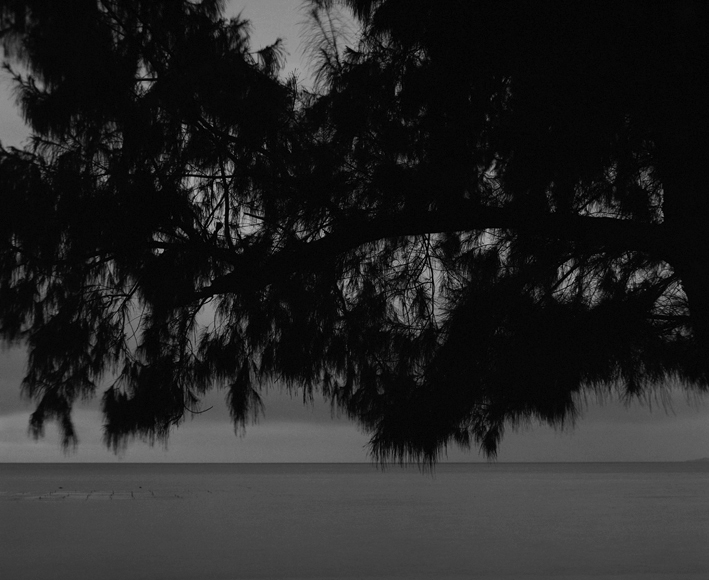
Awoiska van der Molen, #413-16 2015, 2015.